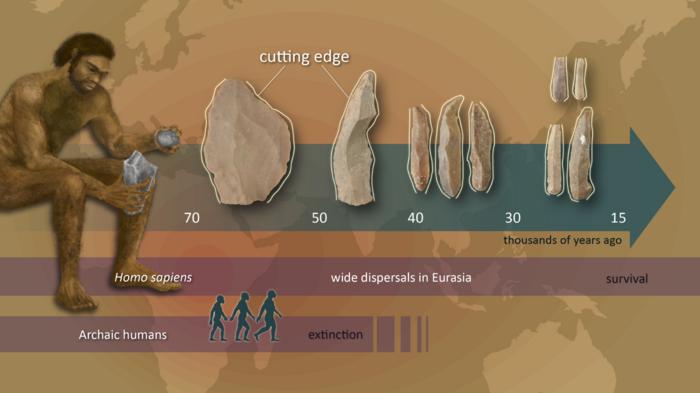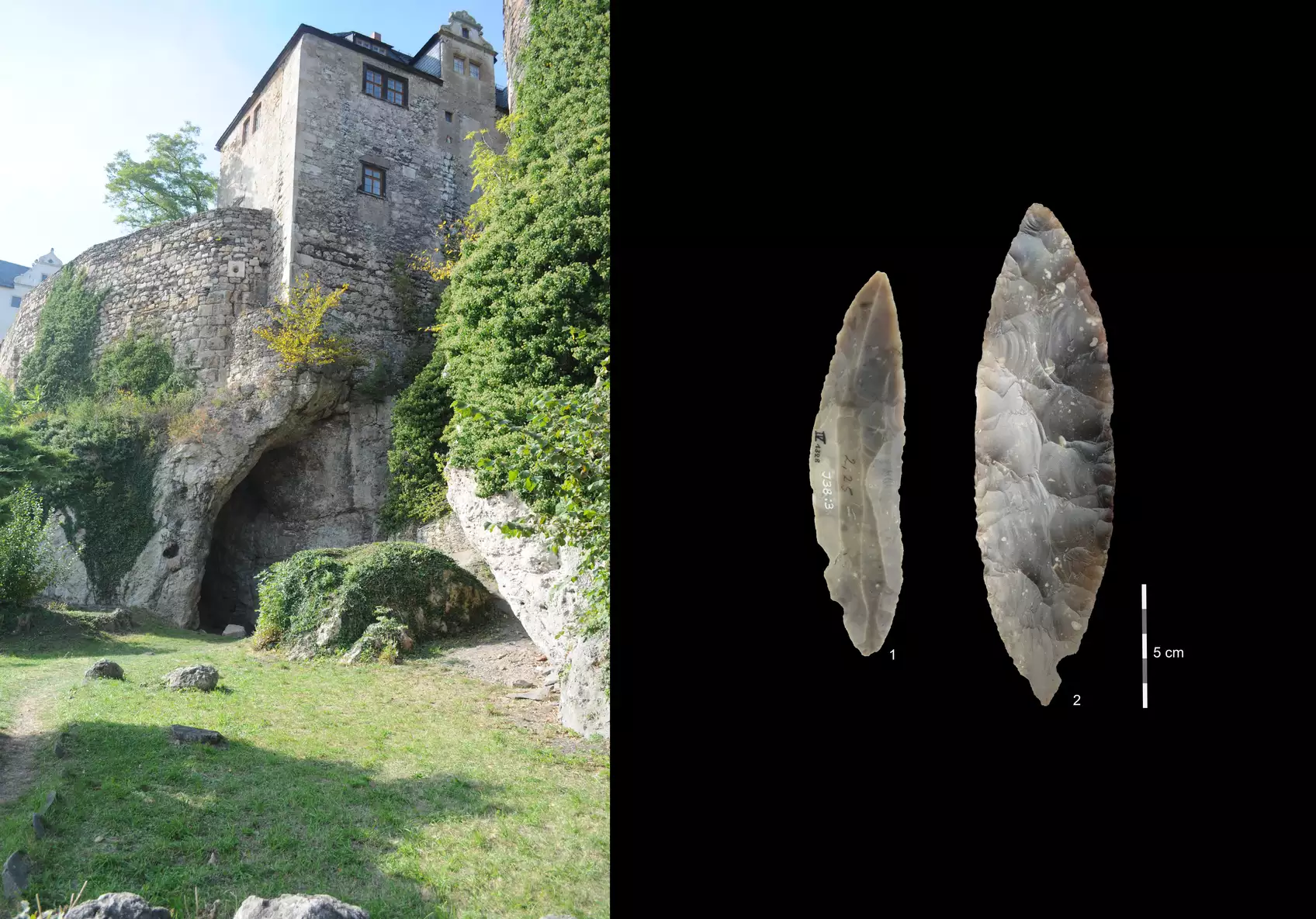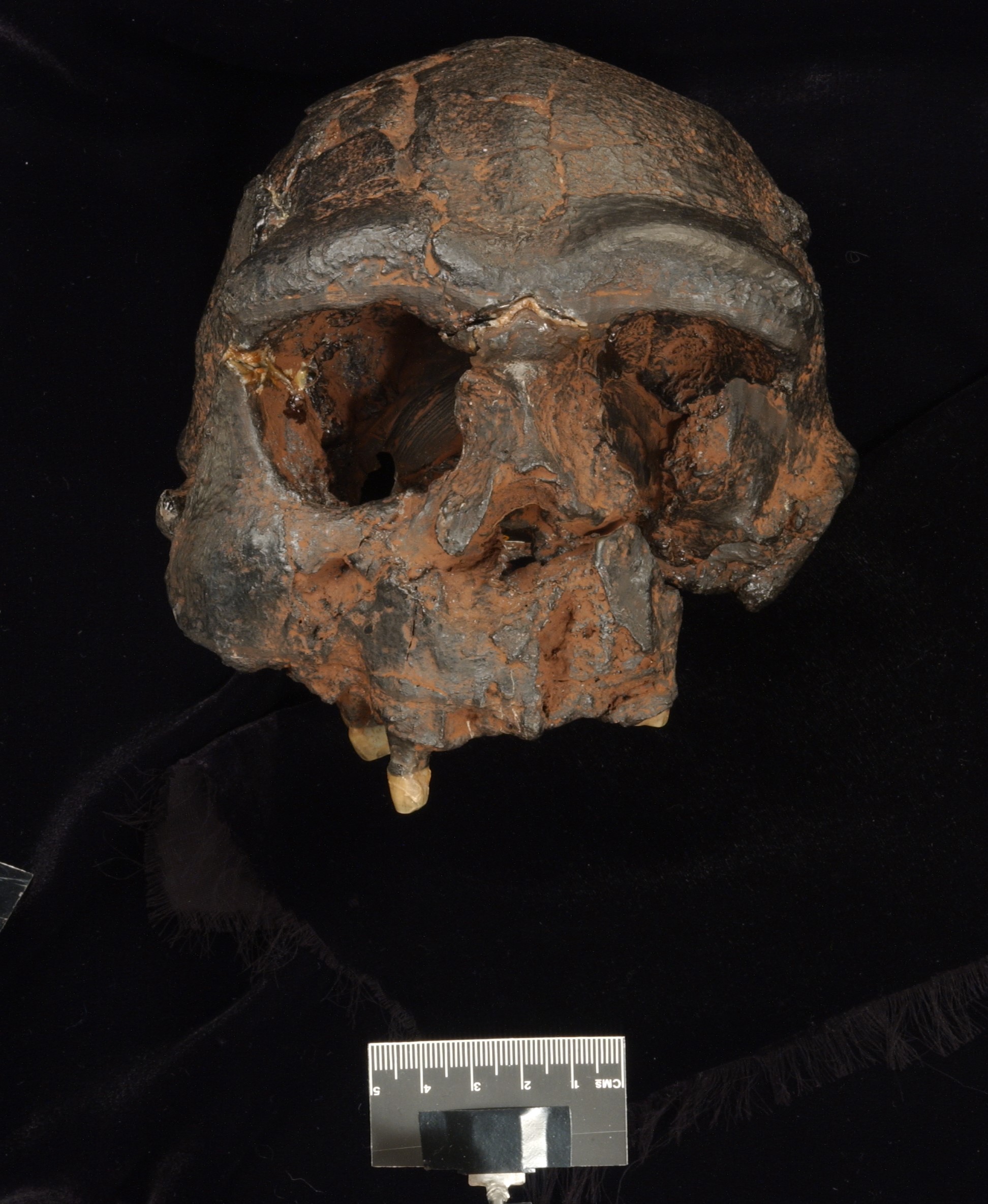A study led by researchers at the Nagoya University Museum in Japan may change how we understand the cultural evolution of Homo sapiens at the time of their dispersal across Eurasia about 50,000 to 40,000 years ago.

news, journals and articles from all over the world.

A study led by researchers at the Nagoya University Museum in Japan may change how we understand the cultural evolution of Homo sapiens at the time of their dispersal across Eurasia about 50,000 to 40,000 years ago.

An international research team reports the discovery of Homo sapiens fossils from the cave site Ilsenhöhle in Ranis, Germany. Directly dated to approximately 45,000 years ago, these fossils are associated with elongated stone points partly shaped on both sides (known as partial bifacial blade points), which are characteristic of the Lincombian-Ranisian-Jerzmanowician (LRJ).
What connects a fossil found in a cave in northern Laos with stone tools made in north Australia? The answer is, we do. When our early Homo sapiens ancestors first arrived in Southeast Asia on their way from Africa to Australia, they left evidence of their presence in the form of human fossils that accumulated over thousands of years deep in a cave.
It had been thought to date that the species Homo sapiens has disproportionately large temporal lobes compared to other anthropoid primates, the group including anthropomorphic monkeys and apes. A new study, one of whose authors is Emiliano Bruner, a paleoneurologist at the Centro Nacional de Investigación sobre la Evolución Humana (CENIEH), contradicts that hypothesis.
What links a finger bone and some fossil teeth found in a cave in the remote Altai Mountains of Siberia to a single tooth found in a cave in the limestone landscapes of tropical Laos?
Boker Tachtit in the Negev is a crucial archaeological site for studying the spread of Homo sapiens out of Africa and the subsequent demise of Neanderthals. Using techniques so sophisticated that they can date grains of sand, Weizmann’s Prof. Elisabetta Boaretto and colleagues have shown that previous dating of the site was incorrect – and that early humans and Neanderthals cohabitated at the site.

An international group of researchers led by the University of Adelaide has conducted a comprehensive genetic analysis and found no evidence of interbreeding between modern humans and the ancient humans known from fossil records in Island Southeast Asia. They did find further DNA evidence of our mysterious ancient cousins, the Denisovans, which could mean there are major discoveries to come in the region.